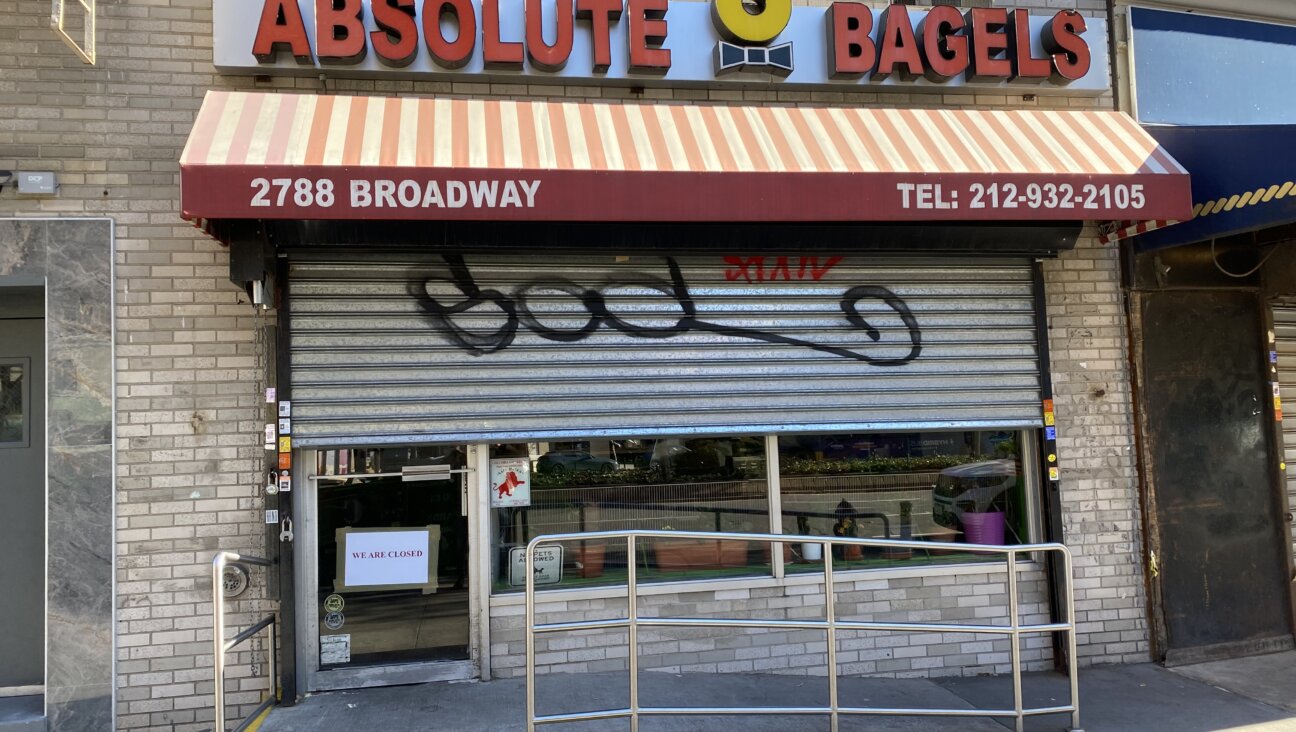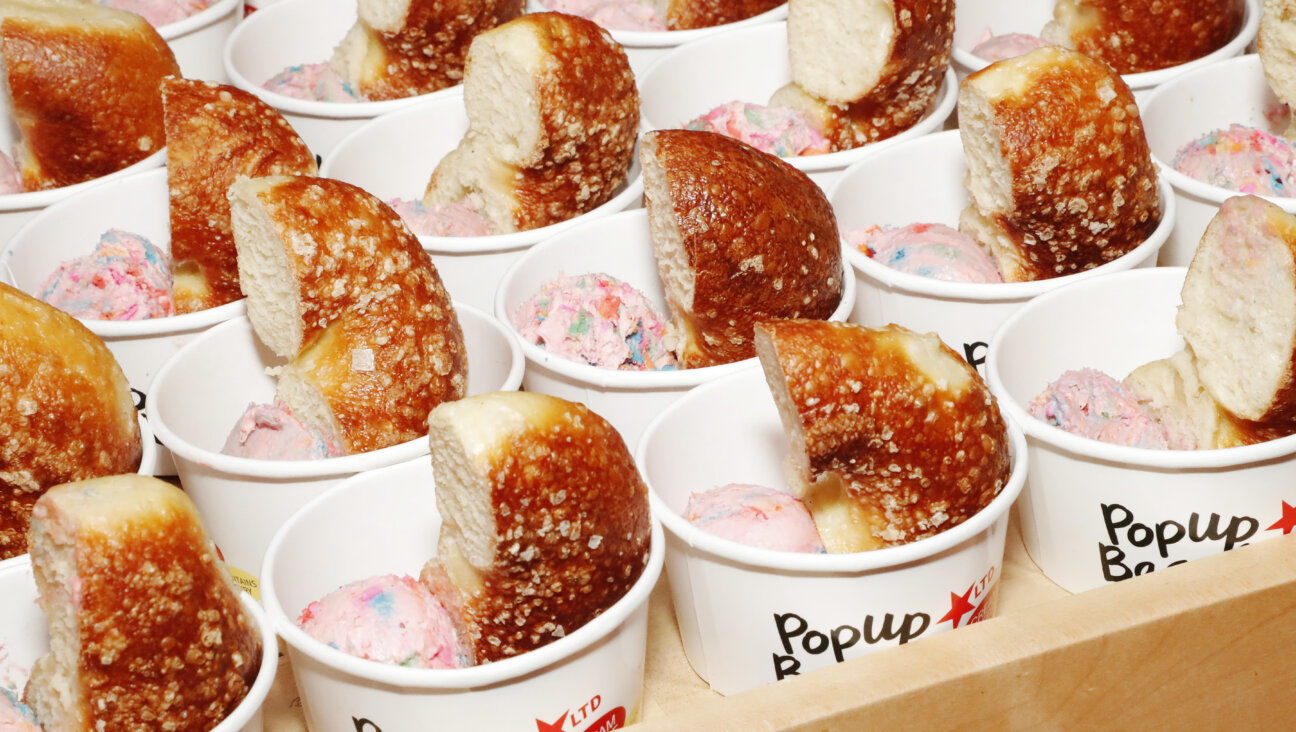What Baking Challah Teaches Us About Life

Image by Jeremy Piehler/Flickr
Once a month, I teach a class in baking challah. There are no machines involved. The (adult) students and I gather the ingredients, proof the yeast, mix in the flour and sugar, eggs and honey, salt and oil. Month in month out, we work off of the same recipe and turn and twist, punch and knead, fold and braid. And never has the resulting bread tasted the same as the batch made the month before. Each challah, like each of us, is unique. Just as we are a mixture of nature and nurture, so too is the finished challah a mixture of the measured ingredients and the care those ingredients received. For challah, I have come to see, while clearly bread that we eat, is also a metaphor for life.
The challah that I make each week in my home has taken on a mystical quality in my mind, within my family, among the guests at my table. Like the main character, Tita, in the Mexican novel, “Like Water For Chocolate,” whose food reflects her love, her joy and her bitterness, the challah that I prepare each week for the Sabbath becomes an extension of myself. How and how much I knead, the precision of my measurements when assembling the bread, the patience I show the dough when it rises once and then rises again, the careful manner in which I knead and shape the challah, all reflect my outlook, my lightest and my darkest moods.
Is it any wonder that the bread that was prepared by the Israelites, while they were frantically and fearfully readying themselves for their hasty departure from Egypt for lands unknown, failed to rise? It remained flat and unseemly, brittle and burnt. The bread did not receive the love and care and time it had come to expect; the hard and dry flatbread, a bread devoid of stroking and time and love, was the end product, a bread made in haste, without the pushing and pulling that challah has come to expect.
Each month, as I teach my class, I see my students’ personalities and insecurities come through in the dough that they prepare. Some use a heavy hand while kneading; others knead lightly and gracefully, braid quickly, with deft fingers. Some rapidly apply a layer of egg wash that leaves the bread with an incomplete shine while others slowly and methodically paint each millimeter of the bread with a thick slick of the egg and water mixture. Their fear, their strength, their insecurities, their self-assuredness emerge from the measured mixture of flour and water and egg.
And as with most important things in life, the more time you give it, the more times you do it, the more attention you pay it, the better the end result will be. Your joy, your fear, your love and your attention are braided into the finally formed bread, reflecting yourself back at you. No matter where you go, there you are – in life, in love, in family and in challah.
For a delicious challah that will delight no matter your mood, try this recipe from master challah baker, Katja Goldman. The baked bread will bring beauty to your table, heavenly scents wafting through your home and the making of it will give you a meditative interlude in your week in which you can focus on bread, on family, on religion and on life.
Weekly Challah
[Recipe written by Katja Goldman, from the cookbook, “The Community Table, Recipes And Stories From The Jewish Community Center In Manhattan & Beyond.”]
Makes 2 Large Loaves
Bread:
2 cups warm water
2 packages dry yeast (4 ½ teaspoons)
2 teaspoons plus 1/3 cup sugar
¼ cup honey
4 extra-large eggs
6 to 7 cups unbleached all-purpose flour, as needed, plus more for dusting
4 teaspoons kosher salt
1 cup grapeseed or safflower oil, plus more for oiling the bowl
1 cup white whole-wheat flour
1 cup bread flour
3 tablespoons of one or a combination of sesame seeds, poppy seed, and za’atar (optional)
Glaze:
1 extra-large egg
2 tablespoons water
2 teaspoons honey (optional)
1) To make the bread, place the warm water in a large bowl and sprinkle the yeast and 2 teaspoons of sugar over the water. Let stand until foamy, about 10 minutes (this is called proofing or activating the yeast).
2) Add the honey, eggs, 2 cups of all-purpose flour, and the remaining sugar to the yeast. Beat hard with a bread whisk or stir vigorously with a wooden spoon until smooth.
3) Add the salt and oil and continue to whisk or stir until the oil is incorporated. Stir in white whole-wheat and bread flour. Gradually add remaining all-purpose flour, starting one cup at a time. When you can no longer stir in the bowl, transfer to a lightly floured surface and continue to gradually add flour, kneading gently until dough is smooth, elastic, and no longer sticky. (The flour amount may vary depending on the age of the flour, the humidity, and the size of your eggs.) Form the dough into a ball.
4) Oil a large bowl and add the dough, turning it once to coat it. Cover the bowl with a damp cloth and place it in a warm, draft-free spot, such as in an oven that’s turned off. Allow the dough to double in bulk, 1 to 2 hours. Poke the dough with 2 fingers; if the indentations remain, the dough has adequately risen; if the indentation fills in, cover the dough and allow it to rise 15 to 30 minutes more.
5) When the dough has doubled, transfer it to a lightly floured work surface and deflate the dough by pushing down on it with the heels of your palms 3 or 4 times (called punching down the dough). If the dough feels sticky or seems too soft, knead in more flour. Divide the dough into two portions. Divide each portion into three equal pieces. Roll out each piece into a long uniform strand (about 16-inches). Place the three strands side by side lengthwise and braid them, resulting in two braided challah loaves.
6) Transfer each loaf to a parchment covered baking sheet. Allow the shaped dough to rise in a warm place until an indentation remains when the dough is poked lightly with a finger, 30 to 40 minutes.
7) Meanwhile, preheat the oven to 350 degrees F.
8) To make the glaze, beat the egg in a small bowl with the water and honey, if using.
9) Bake the challot until they sound hollow when tapped (or to an internal temperature of 195 to 199 degrees F). Just before they are done (at 190 to 193 degrees F), remove them from the oven and brush with the glaze. Return the breads to the oven and bake until golden brown, 5 to 10 minutes. Brush again with the glaze, sprinkle with the seeds, if using, and return them to the oven until they look shiny and the glaze looks cooked, about 2 minutes. Remove from oven and cool on racks.
Rachel Ringler is a museum docent, challah instructor and cook who has strong feelings about the important role food plays in life, in family and in community.
A message from our Publisher & CEO Rachel Fishman Feddersen

I hope you appreciated this article. Before you go, I’d like to ask you to please support the Forward’s award-winning, nonprofit journalism during this critical time.
We’ve set a goal to raise $260,000 by December 31. That’s an ambitious goal, but one that will give us the resources we need to invest in the high quality news, opinion, analysis and cultural coverage that isn’t available anywhere else.
If you feel inspired to make an impact, now is the time to give something back. Join us as a member at your most generous level.
— Rachel Fishman Feddersen, Publisher and CEO
























